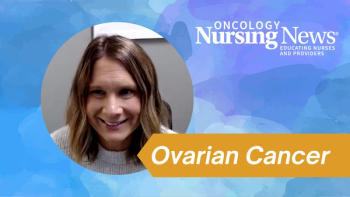
Empowering CML Patients: Why Open Communication About Symptoms Matters
Panelists discuss how establishing trust and open communication with patients with chronic myeloid leukemia (CML) is crucial for treatment adherence, emphasizing the importance of asking specific questions about adverse effects rather than general inquiries, acknowledging that patients may feel reluctant to mention problems due to feeling "blessed" to have life-saving medication, and ultimately ensuring these conversations happen to prevent routine visits from missing quality-of-life issues.
Episodes in this series

Patient Communication Strategies in CML Management: Physician Summary
Effective Approaches for Symptom Disclosure and Adherence
Establishing Therapeutic Trust
- Communication foundation: Build a trustworthy provider-patient relationship that enables comfortable symptom disclosure
- Psychological safety: Create an environment where patients feel safe discussing concerns without judgment
Structured Inquiry Techniques
- Avoid closed-ended questions: Questions such as "How are you doing?" often elicit generic positive responses that mask issues
- Use specific symptom inquiries: Directly ask about known tyrosine kinase inhibitor (TKI) adverse effects (eg, "How is your joint pain?" rather than "Any problems?")
- Normalize nonadherence: Frame medication challenges as common experiences
- Example approach: "It's difficult to take medication every day. How many doses do you typically miss each week?"
- This normalizing approach yields more honest responses than direct adherence questioning.
Addressing Patient Reluctance
- Gratitude barrier: Patients often feel "blessed" to have life-saving therapy and may be reluctant to "complain" about adverse effects
- Follow-up on previously reported symptoms: "What about the diarrhea you mentioned last time?"
- Proactive monitoring: Systematically inquire about common TKI-related issues (eg, fatigue, joint pain, and gastrointestinal symptoms)
Clinical Implications
- From surviving to thriving: Moving beyond disease control to quality-of-life optimization
- Routine visit pitfall: Standard follow-up appointments can become perfunctory without deliberate symptom exploration.
- Therapeutic optimization: Open communication enables appropriate dose adjustments, supportive care, or consideration of alternative TKIs.
Implementing these communication strategies helps identify issues that might otherwise remain hidden, supporting both treatment adherence and quality of life in patients living with CML as a chronic condition.
Newsletter
Knowledge is power. Don’t miss the most recent breakthroughs in cancer care.


















































































